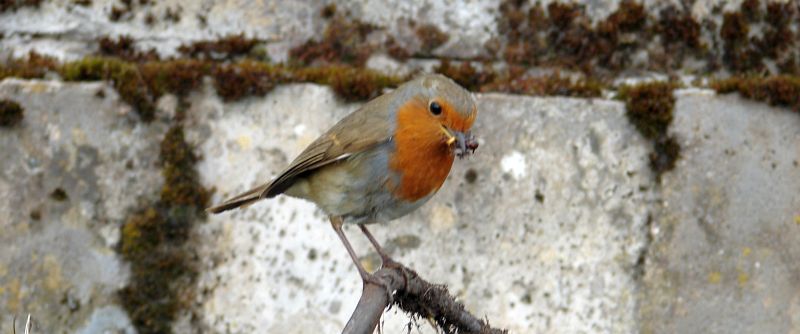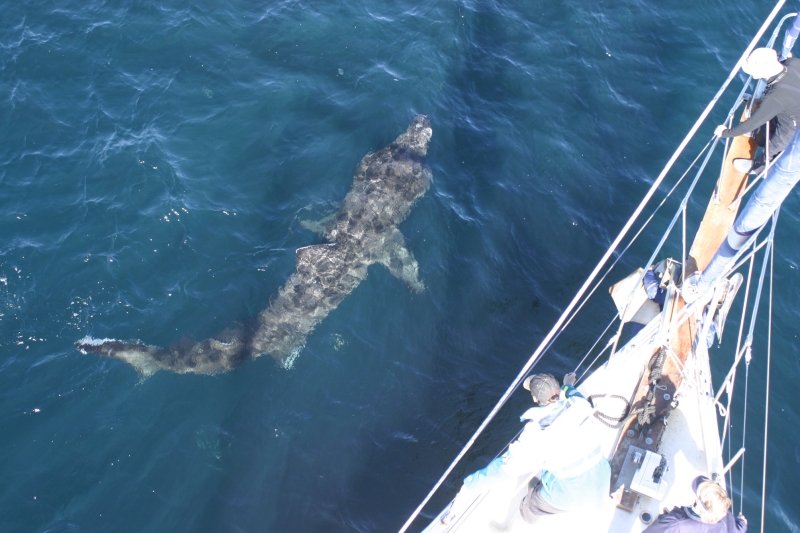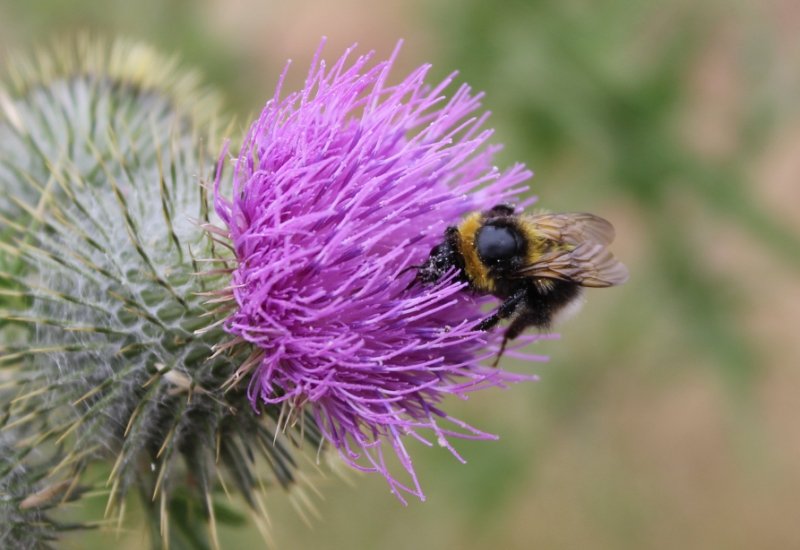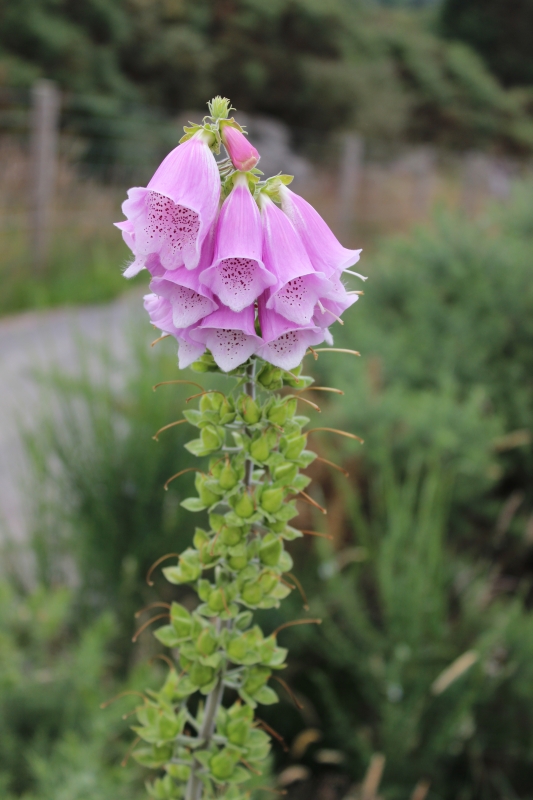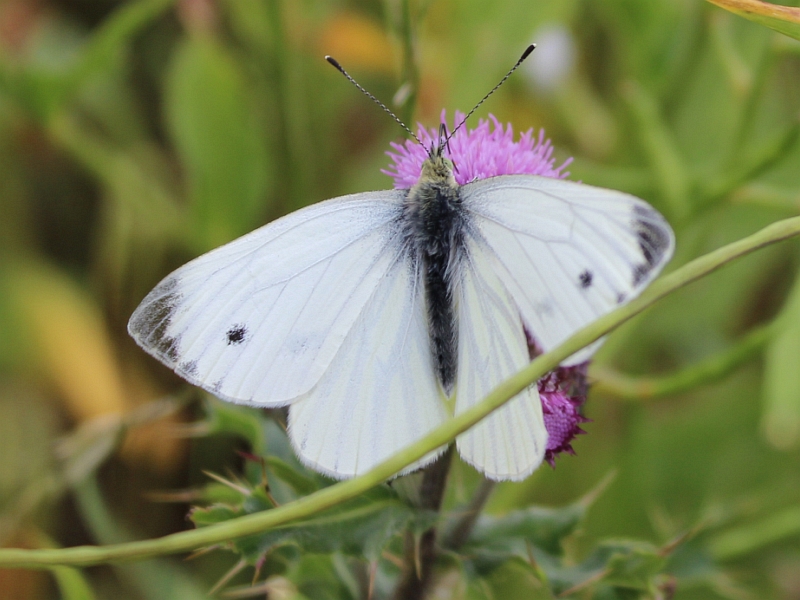Suzanne Kelly writes about how the Royal Society for Protection of Birds is determined to cull dozens of feral goats – and deny an animal sanctuary the chance to rescue them, and what is going wrong with land management in Scotland today.
 Culling is a fact of wildlife management (so we’re told). But are we culling all sorts of creatures in Scotland too aggressively?
Culling is a fact of wildlife management (so we’re told). But are we culling all sorts of creatures in Scotland too aggressively?
Are there other alternatives to culling?
Many animal rights charities would point to measures such as fencing, deterrents, rehoming and other means.
But we have apparently seen illegal shooting of seals from private land in Gardenstown without the landowner’s consent, and against the landowner’s stated wishes.
Aberdeen culled its Tullos Hill deer population by 35 or so animals: their records are too contradictory to say exactly how many were shot.
Elsewhere, mountain hares are being persecuted by gamekeepers, and birds of prey are being illegally killed, often suffering agonising deaths from poison or in traps.
Prosecutions for such offences are rare and when there are successful convictions, the penalty is more often than not a fine so low that it is seen by many as just another business expense for the unscrupulous landowners whose employees are engaged in this kind of activity.
The badger cull may top all these instances though for its cruelty, illogic, and potentially inflaming the problem it was meant to tackle.
But surely when a small population of animals can be rescued and rehomed instead of being slaughtered, an organisation such as the RSPB can be relied upon to do the right thing, and not kill where a clear non-lethal option exists? Not at Loch Lomond.
This Gets My Goat
The RSPB want to plant more trees for birds; so far so good. They want to kill feral goats, and have already shot at least 5 at the time of writing. They claim they will continue until March. A huge outpouring of public anger, and threats from the public to withdraw their donations has caused the RSPB to enter into talks: but they are continuing to kill. The BBC reported:-
“Hillside Animal Sanctuary urged RSPB Scotland to halt the cull, which is being carried out to protect Pollochro Woods. The area is viewed as a site of special scientific importance. RSPB Scotland said it would consider alternative solutions in March, but that the cull will continue until then.
“Along with advisors at Scottish Natural Heritage (SNH), the RSPB wants to reduce goat numbers in the area from about 69 to 30. So far, five out of the planned 20 animals targeted during 2013 have been killed. But Wendy Valentine of Hillside Animal Sanctuary said it had offered to give the goats a home for the rest of their lives rather than have them shot.”
http://www.bbc.co.uk/news/uk-scotland-tayside-central-25123587
a salmon in a fish farm has an appalling existence
The RSPB’s rebuff of Hillside has created a media and Twitter storm, and it is hoped that the RSPB will see sense and relent.
John Robins of the Animal Concern Advice Line issued a draft letter and list of people to contact, which can be found at the end of this article. Robins said:-
“Scotland for Animals is heavily involved in the negotiations to save the goats and they tell me that it is also important to lobby the Forestry Commission and Government agency Scottish Natural Heritage (SNH). It does not surprise me that SNH is involved in this.
“SNH has developed what can only be described as a culling compulsion and is intent on slaughtering tens of thousands of deer and grey squirrels. They were also responsible for the culling of hedgehogs in the Hebrides and supported the culling of the colony of wild wallabies on an island in Loch Lomond.”
Hillside wrote to its supporters saying:
“Following our plea for help in our last email to you, we would like to thank all of our supporters who inundated the RSPB to voice their dissatisfaction about the culling. The RSPB have responded today by contacting us requesting a meeting but HAVE NOT AGREED to stop killing the goats at Loch Lomond.
“Please can you help us save the lives of these popular goats by contacting the RSPB and asking them to let Hillside give them a safe home. You can do this by contacting RSPB CEO, Mike Clarke on the following email address… Mike.Clarke@rspb.org.uk“
The RSPB were faced with public outcry when details of the goat cull were exposed. They issued a statement claiming they tried to seek alternatives, and claimed they were in touch with the British Feral Goat Research Group, claiming:-
“We have never been opposed to the relocation of the goats and, in fact, we sought a proposal for relocation from the Feral Goat Research Group when we were drawing up the herbivore management plan for the site in 2012, though unfortunately none was forthcoming.” – email to S Kelly of 4 December (more on BFGRG here: http://www.britishferalgoat.org.uk/aims.shtml )
As Private Eye Magazine might say – “Whoops!” When asked to comment the British Feral Goat Research Group answered:-
“Please see our Facebook page for regular updates,..,,we have NEVER stated what has been said, and are pursuing this at present with RSPB” – email to S Kelly of 4 December
The RPSB claims it must go ahead with its current cull, and before allowing any goats to be moved, the RSPB must have assurances the goats’ future welfare will be ensured (presumably this concern for their welfare excludes the RSPB’s own current destruction of the goats).
Wildlife Management and Mismanagement
Who is behind the huge lobbying efforts in Scotland to destroy our wildlife? Fish farms could use better netting to prevent seals from getting to the caged fish. For that matter, a salmon in a fish farm has an appalling existence with barely any room to swim and follow its natural instincts. It is subject to painful attack from flesh-eating sea lice.
Landowners say the SNH population figures are way out of line with reality
Estates that rely on tourist money for shooting want to keep bird of prey numbers down. The SNH seems determined to turn deer into overpopulating villains, eating everything in sight and has even named the non-native Muntjac species ‘the asbo deer’.
Self-publicist SNH man Jamie Hammond is often linked to stories saying deer are over-populated and must be killed off.
At present, landowners are in a standoff against the SNH. What were originally billed as ‘guidelines’ to landowners for deer population control are set to become mandatory powers. The SNH wants to be able to go onto all private land in Scotland, determine how many deer should be shot, and ensure that the killing is carried out.
Landowners say the SNH population figures are way out of line with reality. Landowners also cite the recent ridiculous advice coming from the SNH that fawns should be shot along with their does to avoid them starving in the winter. Landowners point out that this has always been the way that hunting operates.
Adding to the forces aligned against animals is the news that the Forestry Commission has decided to get into the wind farm business. Precisely how a government entity can simply announce that it has a new function is something of a mystery.
There is also an option to control deer by using birth control measures, but because these are currently expensive and perhaps difficult to administer, no one seems to want even to investigate this option. Amazingly, there are laws preventing people from moving deer from over-populated areas.
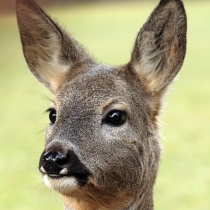 Aberdeen City Council nevertheless considered this option when looking at the Tullos Hill situation, but decreed that since up to 50 percent of wild deer can die if tranquilised, the answer was to shoot and kill 100 percent of the creatures.
Aberdeen City Council nevertheless considered this option when looking at the Tullos Hill situation, but decreed that since up to 50 percent of wild deer can die if tranquilised, the answer was to shoot and kill 100 percent of the creatures.
It seems difficult to understand why a safer form of tranquilisation can’t be found in the 21st century, or why such a law against transporting deer populations for their own good exists at all. It seems as if some form of lobbying shadow group has an anti-wildlife agenda and a strictly pro-tree one.
Perhaps most ridiculously, the Scottish Wildlife Trust now wants to destroy deer in order to meet Government CO2 targets. These arbitrary targets were set rather high, and it is widely acknowledged that pollutants from vehicles, industrial activity and energy waste are among the worst offenders in terms of CO2 production, as well as other forms of pollution.
But Maggie Keegan of the SWT wants to destroy deer, and was quoted in the press in October pushing this concept. Her theory seems to be that deer eat young trees and other plants, so in order for there to be enough trees to lower CO2, simply shoot the deer.
Trees for Life has planted one million new acres of forest, and yet we still haven’t solved our problem. This is because trees do contribute, when mature, but not all that much in the greater scheme of things. Maggie Keegan vehemently denied by email that there is a pro-hunting element to the SWT, but has not answered questions put to her.
If we have indeed planted so much more new forest, and if trees are the answer, then why haven’t we made the targets already? The SWT are also actively culling grey squirrels in several areas of Scotland. It begs the question, what Scottish wildlife can trust the Scottish Wildlife Trust?
It is a bleak time for Scottish wildlife, and it is time for the actions of all stakeholders, particularly government policy makers to be questioned. Perhaps a good start would be to press the RSPB to allow those Loch Lomond goats to be rescued. If people were to hold to account those behind the culls, boycotting charities when they cross lines such as this one, it might help to turn the tide.
But at present it seems as if financial interests, the hunting lobbyists, business interests and the evangelical desire to plant trees, often for their commercial value, at the expense of existing wildlife will outweigh animal concerns.
Suggested letter and who to write to from John Robins of Animal Concern Advice Line:
Once again a short, polite e-mail should suffice. Something along the lines of:
“I ask you to take urgent action to bring about an immediate suspension of the goat cull which is currently underway on the east side of Loch Lomond. The renowned Hillside Animal Sanctuary has offered to rehome the goats. Hillside has successfully carried out such operations in the past and the cull should be suspended at least until the offer from Hillside is fully evaluated.
“All those involved in this cull are either directly funded from the public purse or rely on charitable donations from the public to fund their work. The public, including many people who live in the area where the goats are being killed, are opposed to this unnecessary slaughter.
“Please respect the wishes of those who pay your wages and take action to stop this cull and give serious consideration to the non-lethal alternative which is now available.”
- Comments enabled – see comments box below. Note, all comments will be moderated.
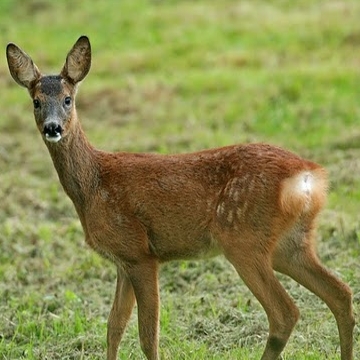 A dog walker on Kincorth Hill made a gruesome discovery when their dog found a severed roe deer leg this week.
A dog walker on Kincorth Hill made a gruesome discovery when their dog found a severed roe deer leg this week. Malone had prevented two people from speaking against the cull (they had new evidence to bring including the cost of the previous failure) at the committee meeting at which the ‘Tree for Every Citizen Scheme’s’ supporters voted to have the deer shot.
Malone had prevented two people from speaking against the cull (they had new evidence to bring including the cost of the previous failure) at the committee meeting at which the ‘Tree for Every Citizen Scheme’s’ supporters voted to have the deer shot.
